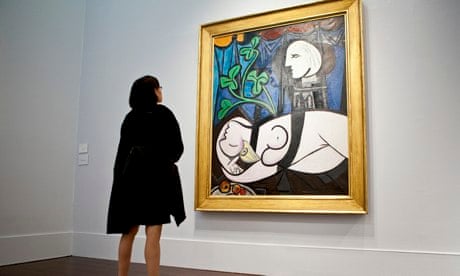The winners of the Arts Foundation awards will be announced on Thursday evening. I was a member of the jury for the award for cultural journalism, introduced for the very first time this year, which is telling. The awards were established to reward innovation and to support emerging artists – the fact that journalists need that support is a sign of the times. The whole judging experience has been sobering.
Applicants submitted three articles: an appraisal of their practice, a summary of how they planned to spend the award prize, and what difference they felt winning would make. The experience was shocking not just because the quality of the writing was so high, but because of the frustration expressed by many of the applicants and the air of desperation that emanated from their submissions.
Some of them specialise in theatre reviews, others in music, art, craft or film criticism. Some write for mainstream print media, others for specialist publications, obscure fanzines or online review sites. For most, survival depends on creating new initiatives or trying pretty much anything that comes to hand. I was struck by the energy, enthusiasm and intelligence they brought to the challenge. Far from being disgruntled wingers, these are committed writers eager to make a difference, yet in each case, the stories they told paint a dismal picture of a profession in crisis.
While relative newcomers are desperate for a job, those working full time describe the exhaustion that results from churning out endless material and having no time for considered reflection, let alone time off. Freelancers complain of spending more time touting for work and chasing payments than writing copy. The need for time to focus on a long term, in-depth project and bring it to fruition as a production or publication is a common refrain.
Most shocking to me, though, are the mid-career critics who fear redundancy or have recently lost their jobs and are desperate to retrain in the hope that diversifying will provide them with new opportunities.
You could argue that professional critics are irrelevant now that we have bloggers expressing instant online opinions on films, TV programmes, artworks, operas or albums. The owners and editors of national newspapers certainly seem to agree. Critics are being replaced by feature writers who produce copy as bland as a press release or sycophantic interviews about the subject's celebrity status rather than their work, about which they seem to know almost nothing.
I became a critic because there was dire need for someone sympathetic and knowledgeable to write about art. My goal as art critic of Time Out was to inject life into the conservative art scene by writing provocative prose demonstrating that contemporary art matters. I was on a mission to create a climate in which artists could thrive.
I had emerged from the Slade School in the 1960s as an ambitious painter intent on making my mark and was lucky to be included in a survey show at the Camden Arts Centre. I sold everything yet was deeply disappointed; the media coverage had been patronising and banal. Like many artists, I craved an intelligent response; otherwise making art seemed lonely and pointless. Without an audience, I was like a dog howling in the wilderness.
Many years later, as director of exhibitions at the ICA, I had the chance to give young artists a platform. To attract an audience, though, I needed a sympathetic press and was shocked at the laziness of many who came to scoff the free lunches. My press releases often appeared verbatim as their copy.
Today things could not be more different; hostility has given way to admiration. Art is so fashionable that high profile exhibitions attract more punters than football matches. This is good news for museums desperately short of funds, but bad news for critics. Box office returns are of paramount importance, so to ensure a good press, galleries micro-manage media response. At press views, the curator will often take a hoard of hacks on a tour of the exhibition and tell them what to write – they traipse off to file obsequious reports scarcely having glanced at the show, and everyone is happy.
Why does this matter? Because adulation is as poisonous as neglect. The arts thrive in a climate of lively and informed debate; emerging artists need the endorsement of an intelligent response and successful artists, under pressure to churn out more of the same, need encouragement to risk failure by trying something new.
For readers, intelligent criticism provides an example of how to think analytically and arrive at judgements that do not parrot the press release or follow the party line – skills that are just as important in daily life. We are encouraged to regard ourselves as consumers who absorb rather than agents who think, assess or do. Good criticism exemplifies active engagement rather than passive consumption, and is an education for us all.
Sarah Kent is an art critic, and formerly visual arts editor of Time Out London and director of exhibitions at the ICA
This content is brought to you by Guardian Professional. To get more articles like this direct to your inbox, sign up free to become a member of the Culture Professionals Network.






Comments (…)
Sign in or create your Guardian account to join the discussion